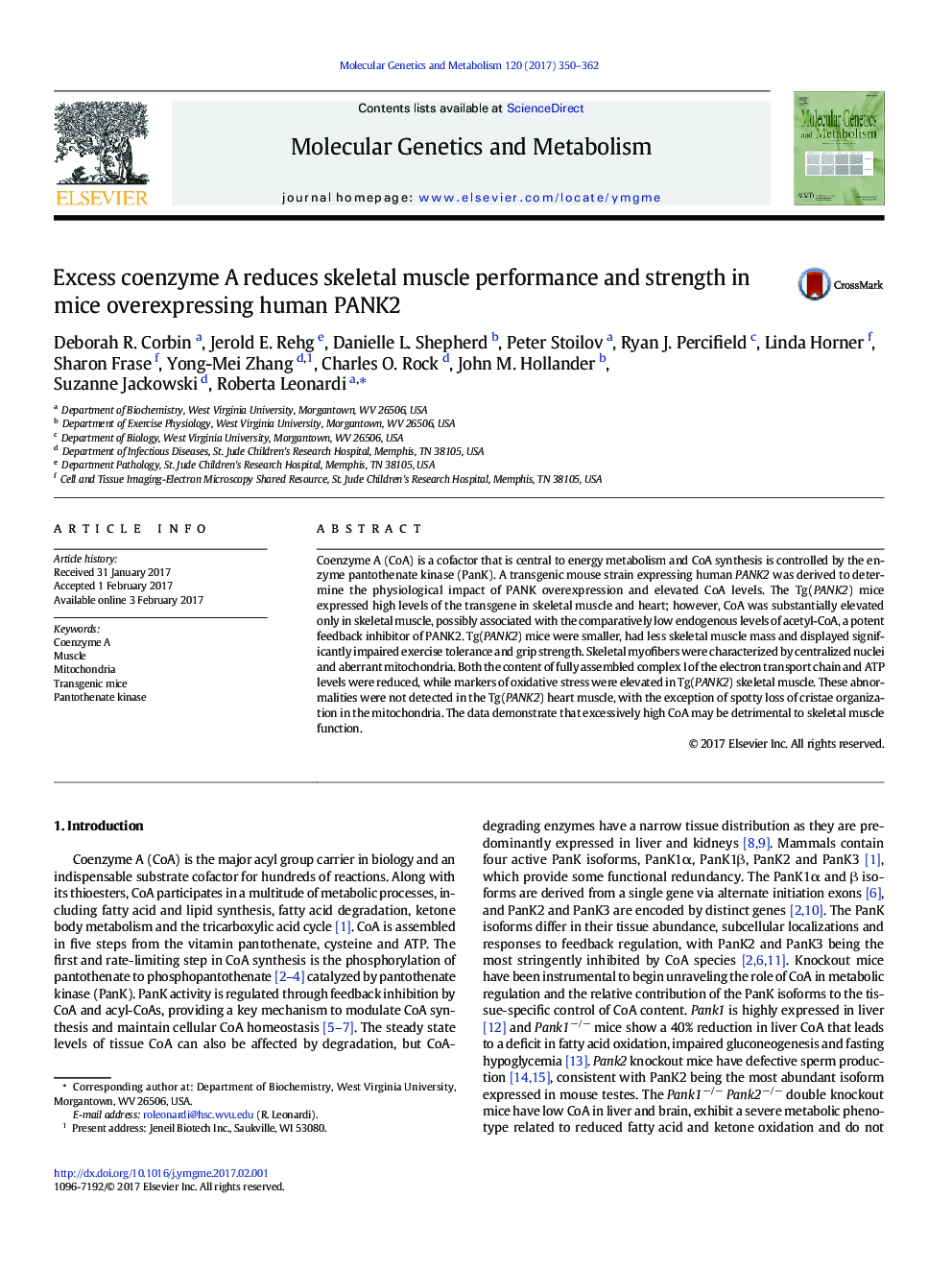| کد مقاله | کد نشریه | سال انتشار | مقاله انگلیسی | نسخه تمام متن |
|---|---|---|---|---|
| 5513947 | 1541555 | 2017 | 13 صفحه PDF | دانلود رایگان |

• Human PANK2 was overexpressed in muscle tissues of Tg(PANK2) mice.
• CoA levels were elevated in transgenic skeletal muscles but not in the heart.
• Elevation of CoA levels in skeletal muscles correlated with muscle abnormalities.
• Tight regulation of muscle CoA levels is essential for normal development and function.
Coenzyme A (CoA) is a cofactor that is central to energy metabolism and CoA synthesis is controlled by the enzyme pantothenate kinase (PanK). A transgenic mouse strain expressing human PANK2 was derived to determine the physiological impact of PANK overexpression and elevated CoA levels. The Tg(PANK2) mice expressed high levels of the transgene in skeletal muscle and heart; however, CoA was substantially elevated only in skeletal muscle, possibly associated with the comparatively low endogenous levels of acetyl-CoA, a potent feedback inhibitor of PANK2. Tg(PANK2) mice were smaller, had less skeletal muscle mass and displayed significantly impaired exercise tolerance and grip strength. Skeletal myofibers were characterized by centralized nuclei and aberrant mitochondria. Both the content of fully assembled complex I of the electron transport chain and ATP levels were reduced, while markers of oxidative stress were elevated in Tg(PANK2) skeletal muscle. These abnormalities were not detected in the Tg(PANK2) heart muscle, with the exception of spotty loss of cristae organization in the mitochondria. The data demonstrate that excessively high CoA may be detrimental to skeletal muscle function.
Journal: Molecular Genetics and Metabolism - Volume 120, Issue 4, April 2017, Pages 350–362